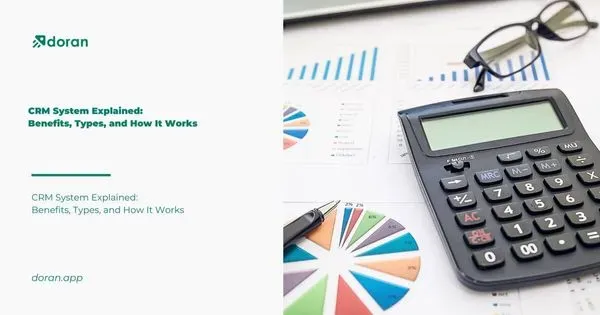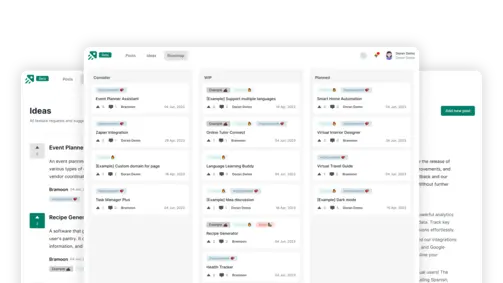Unpacking the SaaS Business Model - In-depth Analysis
Create changelog and product roadmap for your product
Explore nowTable of contents 6 min
The SaaS business model offers numerous advantages for both software providers and users. Its scalability, accessibility, cost-effectiveness, and enhanced security make it a compelling choice for businesses of all sizes. Embracing the SaaS model opens up new possibilities for innovation and collaboration in the digital landscape.
SaaS Explained
SaaS, short for Software as a Service, is a cloud-based software delivery model recently gaining significant popularity. It is a method of delivering software applications over the internet, where users can access and utilize these applications without downloading or installing them on their local devices.
In a traditional software model, users would purchase a physical copy of the software, install it on their computers, and manage its maintenance and updates. However, SaaS business models eliminate the need for such installations and provide a more convenient and cost-effective alternative. With SaaS, users can access the software through a web browser or a dedicated application, and the software provider takes care of all the maintenance, updates, and infrastructure requirements.
What is a Detailed Business Model of SaaS?
Continuing Fees-collecting
As mentioned before, clients won’t have to purchase any hardware in SaaS. The SaaS business model includes giving customers a subscription service for the app, so the subscribers must be aware that they will have to pay for the monthly or yearly subscription fee instead of paying at once.
Find out more: The Importance of customer feedback to SaaS Founders
This continuous fees-collecting model, or recurring payments, is called monthly recurring revenue, or MRR. This specialty of the SaaS business model may need some help with revenue accounting.

Because when your customers agree on a contract and make a subscription, SaaS companies may receive cash in advance, but that amount can’t be recorded as revenue as you haven’t provided any service yet. That money can only be recognized as unearned revenue, which is categorized as a liability - money that customers reserve the right to ask for in return if they fail to deliver the service.
In short, revenue recognition is the foundation of the SaaS business model.
Better Customer Retention Rate
Customer retention is essential in any form of business. Still, in the SaaS business model, the importance of this factor is stressed ten times higher. Because only when your customer retention rate is high that’s the only way your business can generate stable revenue.
Consequently, SaaS business models put tremendous effort into building customer relationships and trust. A loyal customer will likely spend more on your service or product than a new customer. Also, there is a fact that a customer is seven times more likely to leave your company for a competitor because of poor customer support rather than because of the better quality of the product.
Constant Revision
Other businesses may introduce “next-gen” product versions. In contrast, the SaaS business model offers more minor and more frequent updates to keep the users satisfied, which lengthens the customer lifetime value.
This nature comes from the core of a software business: software is vulnerable to risking the information of customers in the hands of hackers. As a result, there is a need for constant revision of the system for security checks to ensure no danger to the business. Being in control of their products means that the SaaS business model can make changes to the product whenever they feel it is necessary. Partnering with effective customer communication, SaaS companies can be really responsive to customer feedback.
Essential Levels of SaaS Business
The business stages of every SaaS business model can be basically divided into 3 levels:
Beginning Level
In the beginning level of SaaS companies, you are unlikely to have many customers yet, and your product may still be developed and not finalized. During this time, you may be looking for the first round of pre-seed funding, whether it is from angel investors or venture capital. Or you may take the bootstrapping approach to better control your companies.
In the early stage, the headcount of your company can be small, and you may focus only on one product. At this time, it is unlikely that you will see any profit yet.

During this beginning level, there are some questions that you must be able to answer: What are my ultimate goals? Is it performance tracking, gaining new users, or optimizing the price? Is my model liable to any kind of funding, and will I be able to distribute it well?
Read more: How to Collect Customer Feedback Effectively
Expansion Level
When your SaaS business model can survive the beginning level, things get dynamic in the expansion stage. At this stage, your companies are generating revenue; more people are using your products, and things are expanding quickly.
There are some types of investors that your SaaS business model can seek to faster the expansion stage, which is also known as the growth stage, including:
-
Venture capital: Venture capital is interested in pouring money into companies that have the potential to achieve decent growth speed.
-
Angel investors: An angel investor is an individual with substantial financial power interested in providing financial support for start-ups. They are most suitable with start-ups that are looking for the first big investment; however, if they are “super” angels, there is a likelihood that they can play an essential role in the later stages of funding.

The support from venture capital funds and angel investors may not be limited to money but also about the business relationships with partners and potential clients. Nevertheless, not all start-ups have to follow that path; some can go through incubators from the very beginning, some can bootstrap for a more extended time, and some may not need any support as the revenue generated is enough for them to continue their business.
Mature Level
When a SaaS business model has reached a mature level, it can prove itself and be regarded as established. A company that is at the mature level has a considerable number of customers, and it is devoted to updating its existing product. The company is generating good MRR, and all the KPIs are met. Mature companies may also be looking for investment. Still, the investment amount may be enormous, and it is used for entering foreign markets or M&A (mergers and acquisitions) efforts.
In this article, we have delved into the SaaS business model and its key components. We explored how SaaS eliminates the need for software installations, offers scalability and flexibility, enhances accessibility, and provides robust security measures. We also highlighted the benefits of SaaS for businesses. By understanding the intricacies of the SaaS model, companies can make informed decisions about adopting this transformative software delivery method.
What to not miss out on our blog
Gain insightful knowledge and invaluable experiences from dedicated experts.

CRM System Explained: Benefits, Types, and How It Works
Discover everything about CRM system. Learn the benefits and how a CRM system works to improve customer relationships and streamline business operations.

Are you ready? Start your free trial today.
Enhance communication, keep track of the progress, understand customers' insight and more by taking your first trial on Doran.
Sign up for free


